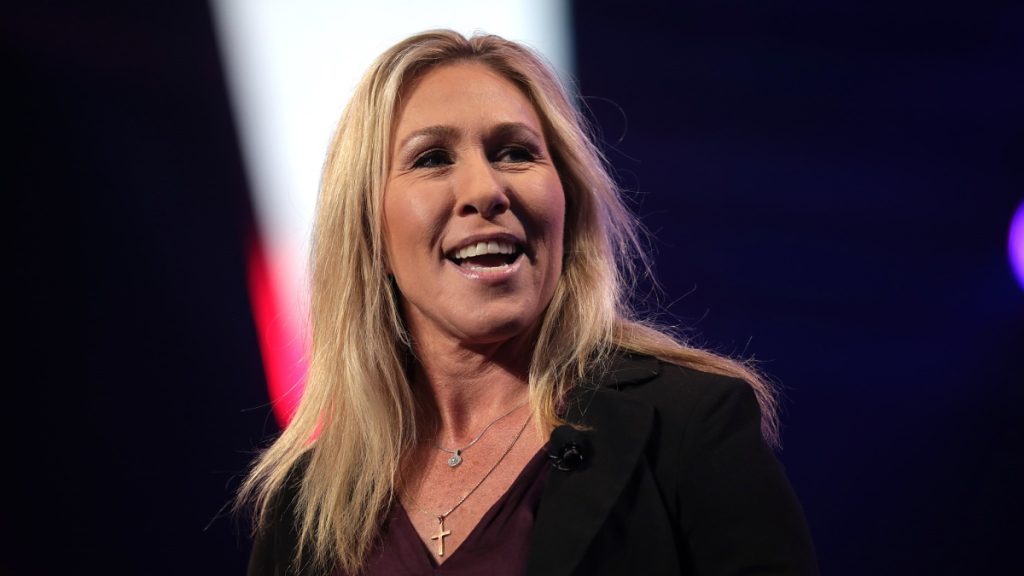Georgia Congresswoman Marjorie Taylor Greene caused a stir on February 20, 2023, when she called for a national divorce — a proposal that would see the United States split up along roughly red and blue state lines.
Greene tweeted:
Degrees of polarization have reached such alarming levels in the US that figures on both the Left and the Right have entertained the idea of some type of national dissolution. The secession question was settled decisively with the Union’s victory over the Confederacy during the Civil War (1861-1865).
However, secession is a concept that is arguably as American as apple pie due to how the US’s separation from the British Empire during its war of independence was the ultimate expression of secession. So there’s always a strong secessionist instinct that lies within the American populace. The million-dollar question here is how viable would a national divorce be in the 21st century?
A national divorce scenario would be quite difficult for several reasons. State-by-state divisions don’t really exist because the dividing lines, as anarchist political analyst Keith Preston observed, tend to be more “local, ideological, and demographic” in nature.
Further, nationalist commentator Scott Greer called attention to how secessions and related separatists movements require a large degree of elite buy-in — elite defection if you will — for them to occur. In a Substack post, he explained some of these preconditions for secession to occur and why a national divorce is not happening anytime soon:
“Secessions require insurgents with political and institutional power. National Divorce advocates, unlike antebellum Southerners, have neither. The movement is led by an assortment of podcasters and talking heads. Meanwhile, the establishment controls our military, our economic system, our political infrastructure, federal law enforcement, the courts, the mainstream media, the schools, the universities, the federal purse, organized labor, and pretty much every state government.”
Even on the state-by-state front, Greer explained how national divorce would be an unrealistic proposition:
“State governments could snub federal power more directly, but that comes at great risk. States are far more dependent on federal funding than they were in the antebellum era. Roads, schools, police, and scores of other essential services depend on federal aid. A state governor would jeopardize all that by even threatening to secede from the federal government. He would also forsake a great deal of business. Most Republican governors focus primarily on attracting more business investment to their state, not ensuring businesses flee the state. It would be a lot to expect a Republican governor to surrender federal aid and business development to secede.”
On the geopolitical front, a dismembered US could potentially be exploited by not only nation-states but supranational entities like the United Nations. Michael O’Fallon the founder and CEO of Sovereign Alliance made this point in a tweet he posted on February 20, 2023:
That same day, anti-woke author James Lindsay echoed similar elements about a national divorce:
Nature abhors a vacuum, and hastily executed separations could create the conditions for external actors to pounce on a rump North American state(s) and begin projecting malign influence there. All things considered, those pushing for a national divorce don’t have the institutional clout to effect such a change at the moment. Having a sitting member of Congress such as Greene pushing for such a move shows that the idea is not as fringe as many imagined. However, the US is still ways away from seeing hard secession occur in the present.
A more realistic course of action will consist of “soft secessionism” where state and local governments in the US begin assuming more control of controversial issues ranging from abortion to gun rights, while the federal government carries out simple functions. Such a scenario would allow the US to maintain basic security functions while devolving power to the states and counties as a way of defusing social tensions on a host of wedge issues.
In all likelihood, it will take an enormous economic reversal, the US’s fall from great power status or massive ethnic strife to see the country start to divide in earnest. At that juncture, whatever remains of the US will be enfeebled polities that will have trouble just trying to keep the lights on.

